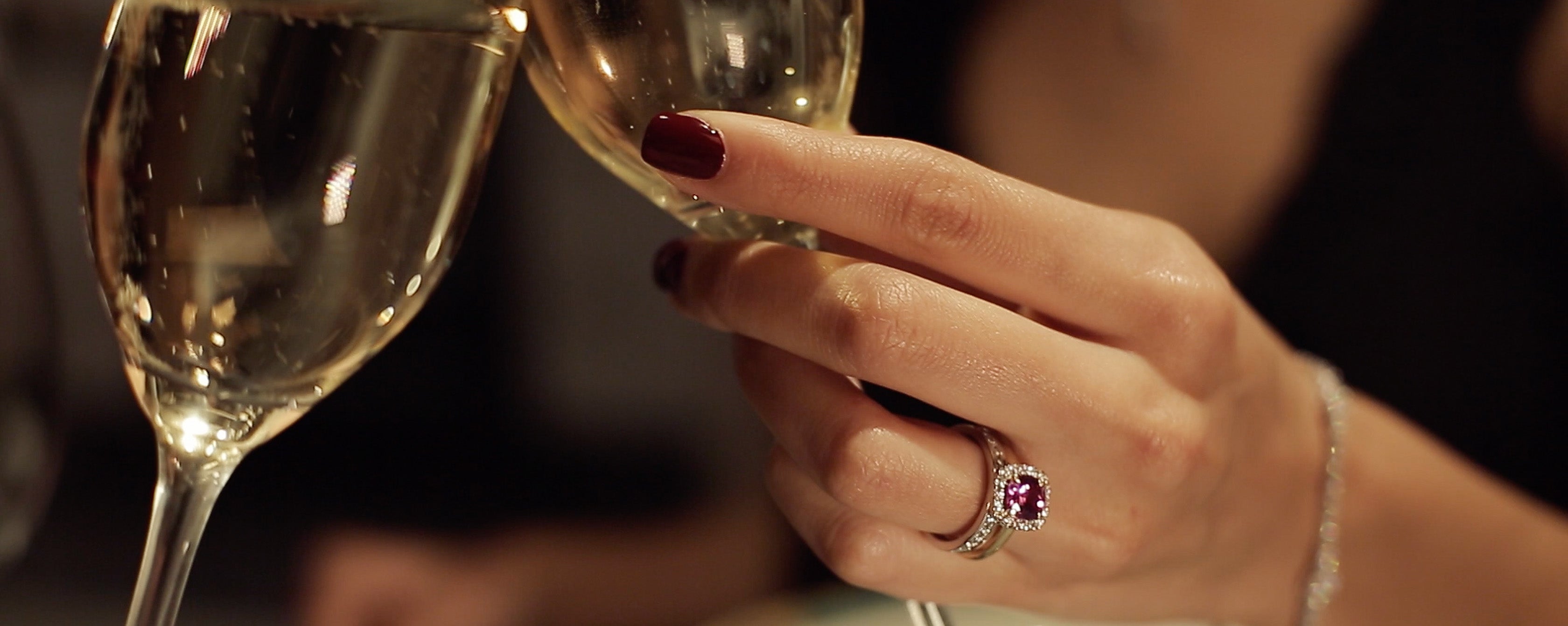Spinel MgAl2O4
The name probably comes from the Latin "Spina" which means thorn or point. This would be a reference to the sharp points of Spinel's octahedral crystals. It is also possible that it comes from the Greek where it means “spark” referring to the beautiful red stones.
In the past, one could not distinguish between ruby and spinel. All red stones were called carbuncles (red-glowing coals). A famous stone is the 414-carat red spinel, called "Catherine the Great ruby," which is incorporated into the Tsar's crown. The "Timur ruby" with its 361 carat is also a winner. This is part of the crown jewels of the British royal family. Also in the crown jewels is the "Black Princes" Ruby, which is an uncut spinel set on the face of the British crown. This shows that it was previously not possible to make this distinction between spinel and ruby. Spinelles were also known as Balas rubies. Balas is an old name for Badakshshan, a province in the north of Afghanistan. Here are mines where spinels have been mined from the year 1000. Marco Polo (1254-1324) already wrote about this. Only in the 19e century the structure and composition were unraveled and the difference with rubies could be determined.
FORMATION
Spinelles are formed in contact or regional metamorphic rocks such as marble. But it is also formed at high temperatures in magmatic rock. Spinelles are found in the parent rock and as alluvial gravel.
ORIGIN
Spinel is found in Afghanistan (Kabul province), Cambodia (Pailin), China (Fujian, Hinan, and Jiangsu province), Madagascar, Myanmar, Pakistan (North, Gilgit), Russia (East Siberia), Sri Lanka (Elahera, Ratnapura) , Tajikistan, Tanzania, Thailand (Bo Ploy, Trat), USA (California) and Vietnam
QUALITIES
The highest priced variant is the red one with a lot of chrome and little iron. The “hot pink” stones are also highly priced. Prices approach that of fine rubies and can range from 500 euros for small stones to many thousands of euros per carat for large stones. Many spinels have a gray haze that makes the color less bright. This is the result of iron in the stone. Iron provides a broad absorption in the visible light that has followed a gray haze. These stones are relatively inexpensive.
Ghanospinels with a reasonable brightness and a nice color change are also demanded high prices. However, this is for a small market of collectors and is rarely used in jewelry.
TREATMENTS
Temperature treatment of spinel is done. It is known that purple and pink spinels can turn yellow when heated (under oxidizing conditions). Blue spinels (iron-graded) can turn green above 900 degrees and yellow above 1200 degrees. Red spinels have been reported to improve in color at high temperatures, but whether this is used systematically is unknown.
IMITATIONS / SYNTHESES
Synthetic spinel has been around since the early 19e century made with the Verneuil method. This is done by simultaneously feeding aluminum oxide and magnesium oxide into the process as a powder. The crystal grows easily if a small excess of magnesium oxide is supplied. All kinds of metals can be mixed in, such as cobalt, iron, titanium and chromium to get any desired color. Due to this excess, the crystal structure is slightly different from the natural variant. As a result, the refractive index is always a bit higher. Natural transparent spinels have a refractive index between 1.710 and 1.718. Syntheses have a refractive index between 1,720 and 1,740. Vaal this is 1.73, which makes it easy to distinguish a synthesis from a natural stone. Many syntheses fluoresce strongly green, which does not occur in nature. In terms of inclusions, it is striking that there are no natural crystals in them. Sometimes small gas bubbles can be seen. Curved growth lines are rarely visible.
Spinels are also made via the flux process. These red spinels have the same refractive index as the natural variant. Only through the spectrophotometer a distinction can be seen between red flux produced spinels and the natural stones.
Glass is of course a good substitute. Natural top doubles have been observed. Star stones have also been made by pasting a cabochon of synthetic spinel onto a black, natural star sapphire. The result looks a bit like a very rare star spinel.
RECOGNIZE
The stone is easily distinguishable from other gemstones based on its refractive index and simple refraction. For the distinction with syntheses: see above.
PROPERTIES
Color: Red, Blue, Violet, Purple, Pink, Green, Black
Hardness: 8
SM: 3.54 to 3.70
Cleavage: Good in one direction, bad in other direction
Fracture: Shell-shaped
Refractive index: 1.71-1.72
Birefringence: none
Optical character: isotropic
Pleochroism: none
Optical Effects: Star Stones
Transparency: transparent
Gloss: high glass gloss
Fluorescence: Strong, Red (with red spinels); faint red or ground in Blue spinels; Cobalt spinel is neutral for SW, faint red for LW. Green and colorless: orange red at LW.
Crystal system: Cubic
Habitus: Octahedra, dodecahedron


